Advertisement
A Tiny, Secret, Street Art Monument In Boston Remembers Trayvon Martin
For about four years, Matthew Hincman had been eyeing the old stump of a lamppost at the corner of Eliot and Centre streets in Jamaica Plain’s Monument Square. It stood there, with two screws sticking pointing up, as if calling for something to go on top.
“Ripe for intervention,” he figured.
And he got to thinking about the granite monument tower on the other side of the square to a couple dozen West Roxbury men who died in the Civil War. Long forgotten men, he thought. “There’s no collective memory around those historical monuments any more,” he says.
“Who do we memorialize?” he began to ask himself. “Why do we memorialize them in the public space?”
And so it happened that a couple Wednesdays ago, right in the middle of the day, the Boston sculptor arrived with an assistant and proceeded, without permission from any official authorities, to attach a small, secret, cylindrical metal thing atop that lamppost.
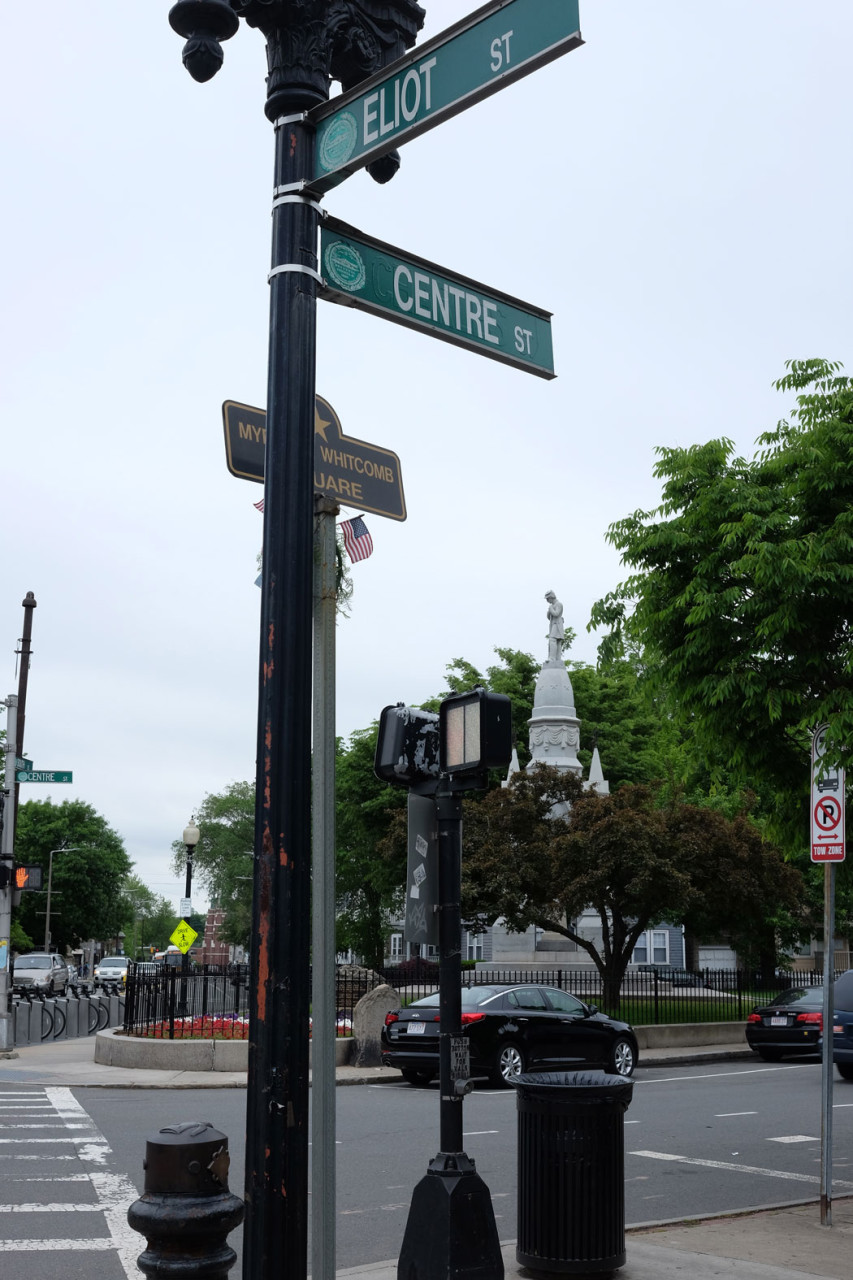
On its flat top is a low relief depicting a hoodie sweatshirt cast to the ground. Around the sides it bears Hincman’s name and the curious message “Still, 2014.” The guerrilla artwork is unobtrusive, camouflaged by how well it matches its environs.
For Hincman, it’s a street art monument to Trayvon Martin, the unarmed African-American teenager who was gunned down in 2012 while walking though a Florida neighborhood talking on his cellphone by—depending on your point of view—an overzealous or just plain racist neighborhood watch coordinator. By pairing Martin’s death with the Civil War monument, Hincman aimed to make “a contemporary marker to how far we’ve come in terms of race relations, in terms of power and equality since the end of slavery, since the end of the Civil War.”
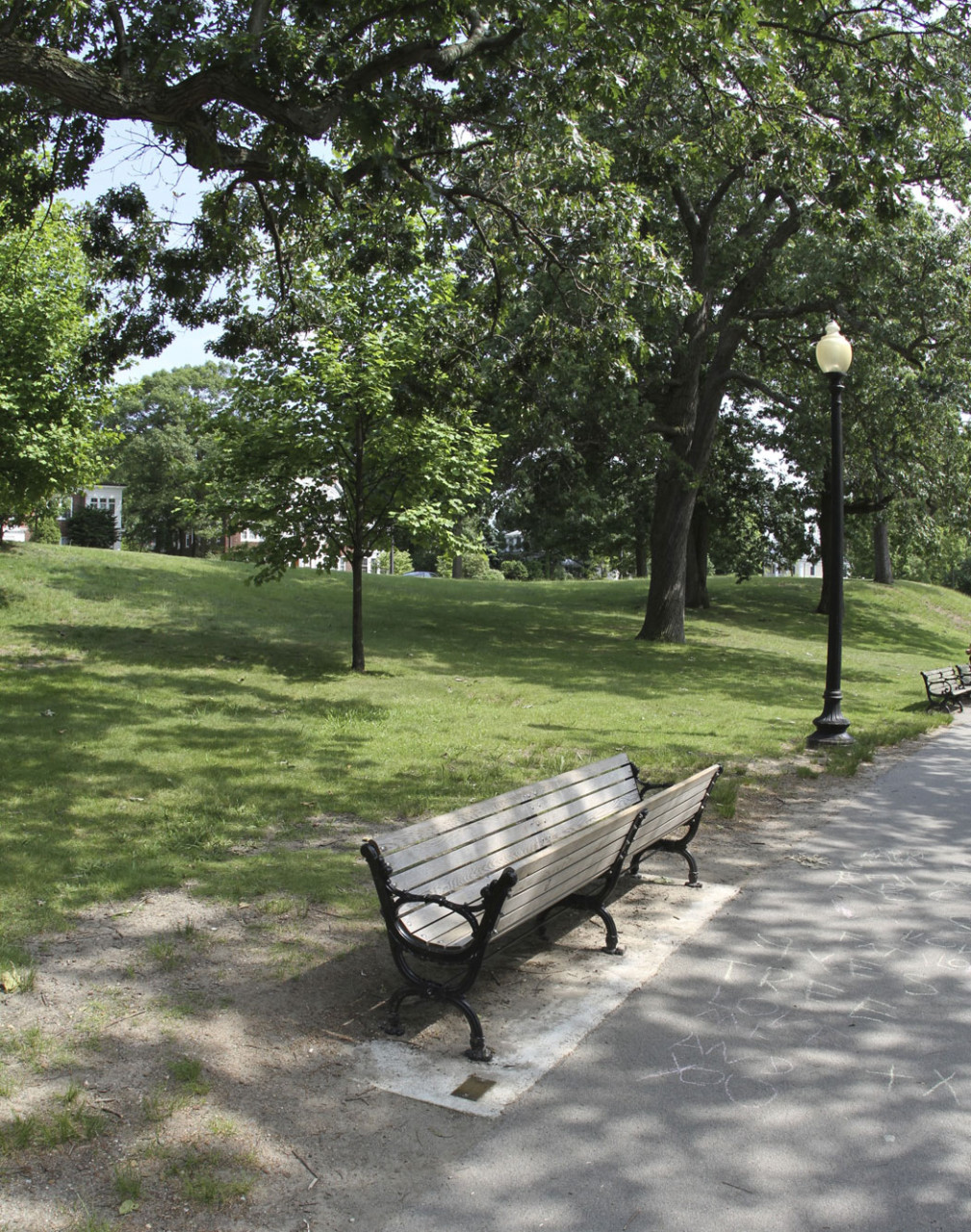
Hincman, who teaches at Massachusetts College of Art and Design in Boston, is best known for another guerrilla art caper he pulled in 2006. Without permission, he installed a park bench on the path around Jamaica Pond. The bench he’d created resembled all the other benches already there—you know, metal legs and wooden seats—except that it had two backs, facing each other to form a U. It was funny. And odd. And after several days, parks workers observed that it didn’t belong and carted it away.
Hincman followed up by inquiring of the city where it went. At first, the Parks Department reprimanded him for his naughty behavior. But then—in one of those wonderful moments that make you think that perhaps everything is right in the world—they also said it was cool and encouraged him to get approval for the thing from the Boston Art Commission. The city board agreed that it was cool, and authorized the curious bench to return to the park under the authority granted to them in 2006 and 2009 and 2011. Since then it has been at the park continuously.
Advertisement
Based on this experience of official embrace, one might be inclined to think that Hincman would now be converted to going through proper city channels. But this is not the case. He remains skeptical of the city’s public art approval process. Though city arts leaders have endeavored to make the art board appear less intimidating, the bureaucracy continues to frighten off many artists. And its projects tend toward commissions in which the theme and site are often already chosen. The board, one might say, is just looking for some artist to illustrate the idea. Hincman feels this is somewhat backwards; that more ideas should originate from artists. Also he’s not sure that the bureaucracy would embrace public art that addresses tense subjects like the Trayvon Martin killing.
“How do we have these conversations in the public space?” Hincman wonders.
So Hincman continues to, shall we say, skirt the law when he feels the project requires it.
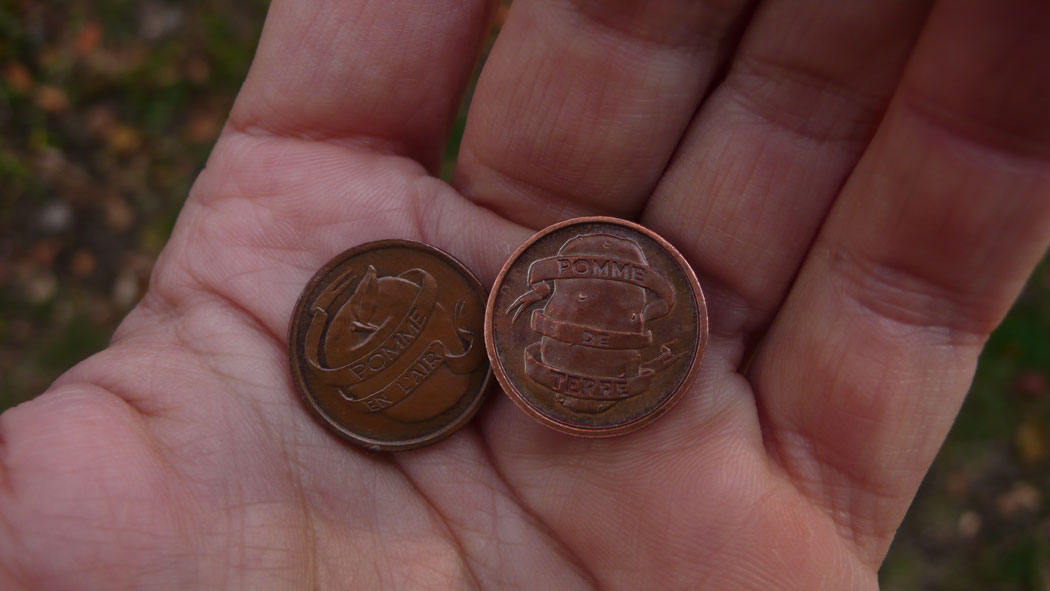
In 2009, to mark the Great Recession and the “rampant commodification of our society” he minted 1,200 copper coins with images of apples and potatoes and the slogans “Pomme de terre” on one side and “Pomme en l’air.” It was a way for him to ponder: “What if what the common people had was more valuable than what the wealthy people had?”
“Circumventing the permitting process,” he says, he dropped them on sidewalks here and there for people to discover.
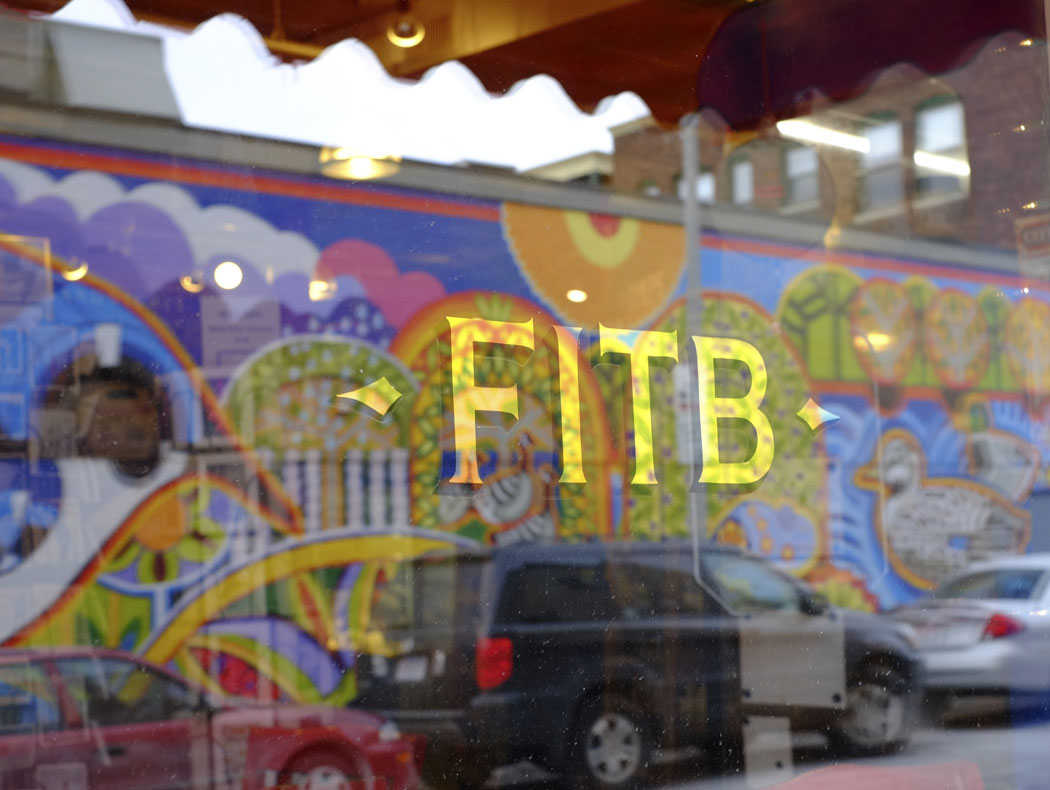
Then in 2011, Hincman worked with professional sign painter Josh Luke of Best Dressed Signs on his project “24k txt." They gilded (with permission) the texting abbreviations “WOA” (work of art), “TWITA” (that’s what I’m talkin’ about) and “FITB” (fill in the blanks) to windows of the Hallway Gallery and City Feed in Jamaica Plain. The idea was to painstakingly recreate this instantaneous, disposable communication as a way of mulling language today.
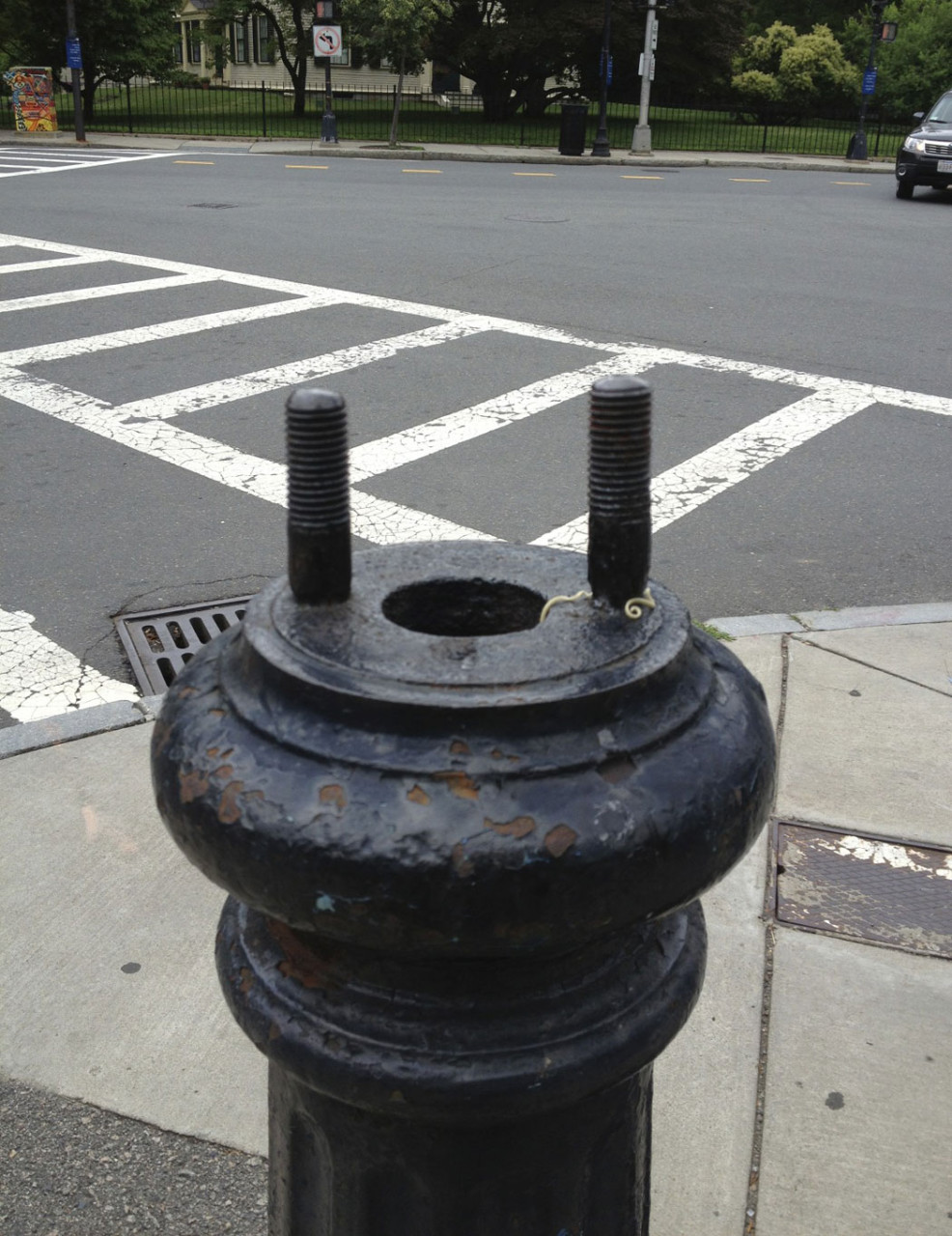
His new Trayvon Martin memorial in Boston, he says, “It’s fairly opaque, I won’t deny that. Some may see the hoodie sweatshirt as a symbol. I don’t really want the work to be didactic.”
“For me, his death was a moment in popular media where this conversation was really opened up. Unfortunately I think there are many stories like his out there,” he says. “I wanted it to be more open than just a memorial to Trayvon as well. I wanted it to be to all young people out there with a hoodie talking on a cell phone to a friend. Because that’s what teenagers do.”
Greg Cook is co-founder of WBUR’s ARTery. Tell him what you think about public art—of the guerrilla variety or otherwise—@AestheticResear and Facebook.
This article was originally published on June 18, 2014.
